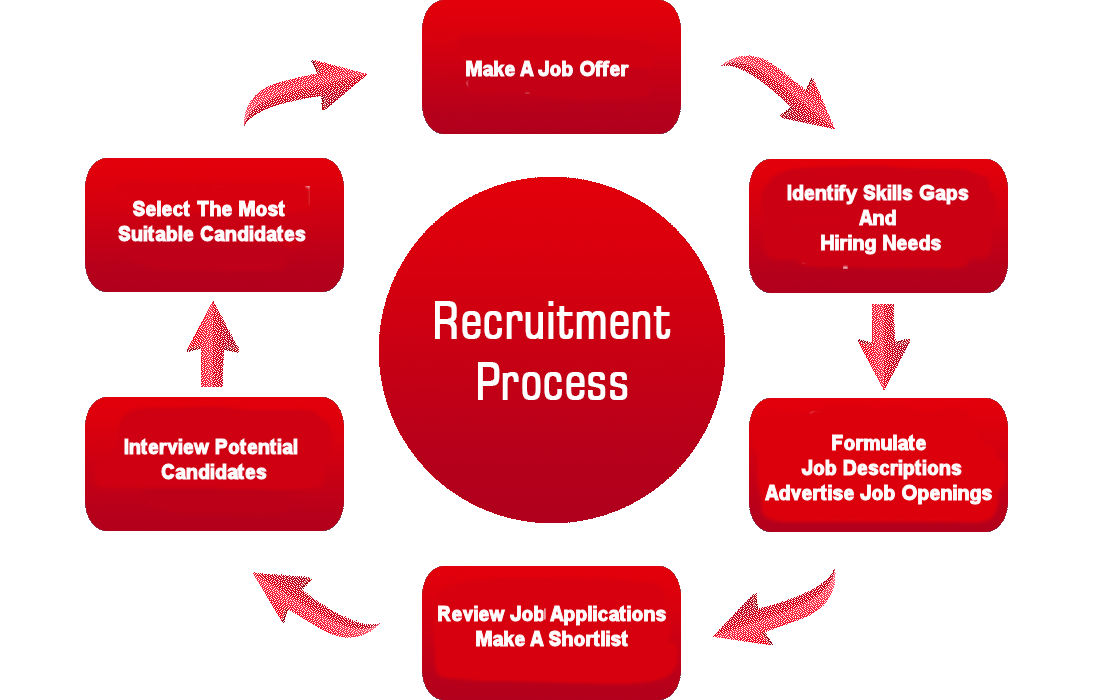During the recruitment and selection process, HR managers need to identify job openings, determine job requirements, review job applications, and select the most suitable candidates.
The recruitment process can be a nerve-wracking experience unless you have the right tools at your disposal. One of these is a recruitment process flowchart, also known as a recruitment workflow.
It is an invaluable aid to finding the right candidates for the job, in a logical and systematic manner.
Do you know how to create an ideal recruitment process flowchart for your company? In this guide, we will take you through what a recruitment flowchart is, and how it helps to simplify the hiring process – from start to finish.
What Is A Recruitment Process Flowchart?
A recruitment process flowchart maps out the entire recruiting process, step by step. The recruiting team can easily track their progress by following the steps in the flowchart.
There are a number of people involved in the recruitment process. Having a visual representation of the entire process makes it easier for everyone to understand how it all works.
What is The Recruitment Process?
The recruitment process entails the following steps to find the right candidates for job openings:
- Analysis of job requirements
- Searching for suitable candidates
- Interviews & negotiation
- Identifying the most qualified candidate
- Offering an applicant a position at your company
How Does A Recruitment Flowchart Streamline The Hiring Process?
The recruitment flowchart helps to simplify the process by mapping out each crucial step that follows in the recruitment and selection process.
It communicates the functions of all the members of the HR team and can be incorporated into your automated recruitment tools.

Create Your Recruitment Process Flowchart
The human resources department can draft a flowchart tailormade for your company. This is as simple as constructing a simple flow diagram of blocks with the different phases detailed in them.
Alternatively, invest in flowchart software to simplify this task for your HR team. Recruitment process flowchart templates can be customized to your company.
Steps To Include In Your Recruitment Process Flowchart
Let’s take a closer look at each of the steps in the flowchart. You may of course rephrase these entries to better communicate the various steps of your recruitment and staffing process to your own team.
Recruitment Process Steps
-
Identify Skills Gaps And Hiring Needs
Consult with the various departments in your organization and identify any missing skills in the company’s workforce.
Take note of any employees who will be leaving the company, thereby vacating their positions. New staff will have to be equipped to take up these positions.
Use all of this information to determine the recruitment needs of your company. This is the starting point of your workflow chart.
-
Formulate Job Descriptions For New Job Openings
Discuss these openings with hiring managers to understand the skills and qualifications needed.
Formulate comprehensive job descriptions for each position. Remember that those descriptions give potential employees the first impression of the company.
- Important details to include in a job description, are:
- Job title
- Summary of position and responsibilities
- Company mission
- Qualifications and experience required
- Type of position (part/full time)
- Start date of the job being offered
- Salary and other benefits
-
Advertise Job Openings To Attract Ideal Applicants
Thorough job descriptions and well-executed marketing of the company culture will go a long way in attracting talent.
Newspapers, career websites, and social media job boards are all suitable methods of advertising. You may decide to use all of these to attract a diverse pool of applicants.
You can also use recruitment process outsourcing for job advertising.
Allow current employees to apply as well, by posting job openings on the company notice boards, or following internal procedures.
-
Review Job Applications
The next step is to review and assess each job application. Compare the information received on the applications to the criteria set out for the position.
Some of these applicants will be more qualified than others, while others may have more experience.
-
Make A Shortlist
Analyze each applicant and decide whether or not they are suitable for the job they are applying for. And whether they are the right fit for your team/company.
Do they meet the job criteria? Do they have the right qualifications? If they do not, perhaps they have relevant work experience and skills that would make them suitable.

-
Interview Potential Candidates
Contact the successful applicants on your shortlist and set up an interview with each one.
Whether you conduct an in-person or virtual interview, the interview process should be standardized. Face-to-face interaction helps you to decide if their personality and communication skills are a good fit for the job and the company.
Ask questions about their qualifications, experience, skills, interests, and desired salary. Have the candidate’s resume at hand, as well as any other relevant documents they may have supplied.
-
Select The Most Suitable Candidates
Assess each potential employee based on the interview as well as the candidate’s references from their previous company.
Do not rush your selection. If necessary, arrange a follow-up interview to finalize a decision.
-
Make A Job Offer
Once you have settled on the best fit for the job, you will negotiate a job offer with the employer and communicate this to the successful candidate.
If the candidate accepts the offer, the onboarding process of your new employee can begin.
In Conclusion
If you want your hiring process to be as stress-free and efficient as possible, a recruitment process flowchart is the answer.
Follow our simple guide above, and your recruitment and selection process will reach new levels of efficiency.
Our comprehensive range of tools removes the stress and laborious admin from the recruitment process. No matter the size of your company or your staffing needs, our software takes care of each step of the process.



